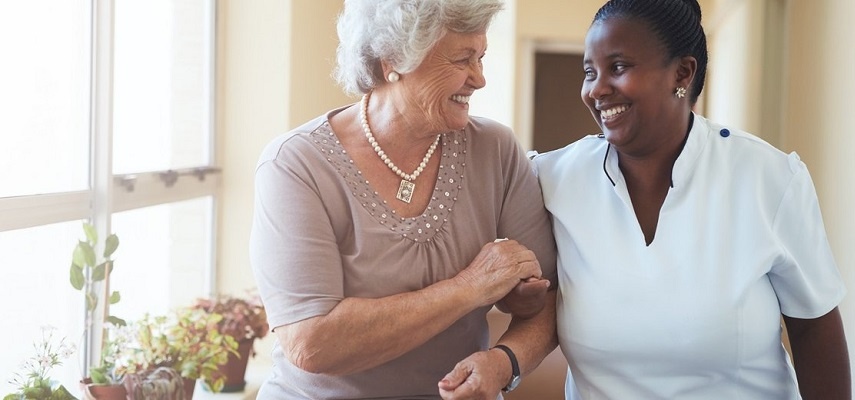Some technologies make a lot of noise. Others, like the humble medical alert bracelet, work quietly in the background—saving lives, reducing emergency response times, and offering peace of mind to families across the country. As Canada’s population gets older, this simple device is stepping into a bigger role than ever before.
From suburban homes in Ontario to high-rises in Vancouver, seniors and caregivers are finding that independence and safety don’t have to be at odds. In fact, they can now go hand-in-hand—literally—with a lightweight bracelet.
Let’s take a closer look at how this small device is making a big difference in senior care.

Photo by Andrea Piacquadio from Pexels
A Growing Need for Simple, Smart Solutions
Canada’s senior population is booming. According to Statistics Canada, more than 9.5 million people will be over the age of 65 by 2030. That’s nearly one in four Canadians. As demand for elder care rises, so does the need for efficient, scalable, and dignified solutions that let seniors live safely in their own homes.
Enter the medical alert bracelet—a compact, often discreet wearable that connects users to help with the press of a button. For many, it’s become the linchpin between independence and risk.
In recent years, Life Assure has emerged as one of the leading providers of these systems in Canada. Their focus on ease-of-use, design, and response time has made their bracelets a staple for many aging Canadians looking to stay in control of their lives.
More Than Just a Button
At first glance, a medical alert bracelet might look like any standard piece of jewelry. But underneath the surface is a built-in safety net. These devices are designed to detect falls, send out distress signals, and connect directly to emergency services or caregiver contacts—all within seconds.
Here’s what many of them can do:
- Detect movement—or sudden lack of it
- Allow for one-touch SOS alerts
- Include GPS tracking (useful for seniors with memory concerns)
- Provide two-way communication
The beauty is in the simplicity. No complicated app logins or multi-step processes—just a single press when it matters most.
Quiet Technology, Loud Impact
While tech companies often focus on flashier tools, medical alert bracelets are flying under the radar—quietly supporting thousands of seniors every day. Their real power lies in how seamlessly they fit into someone’s life.
No need to carry a phone everywhere. No need to rely on memory to call 911. With a bracelet, help is always on hand (literally).
And that has ripple effects: faster emergency responses, fewer hospital stays, reduced stress for caregivers, and improved overall mental well-being for users who feel more secure in their daily routines.
Why Canadian Seniors Are Embracing It
The Canadian healthcare system, while universal, faces real pressures—especially when it comes to elder care. Long wait times, limited resources for home support, and the rising cost of assisted living facilities have all contributed to more families choosing to care for loved ones at home.
For those households, medical alert bracelets offer a form of backup—something that doesn’t require ongoing attention but kicks in exactly when it’s needed. And because the devices are affordable compared to home nursing or retirement residences, they’ve become a cost-effective safety measure for families across all income levels.
Plus, for seniors who value autonomy, these devices are a welcome alternative to feeling “watched over.” It’s not about surveillance—it’s about support.
Safety Without Sacrificing Style
One common hesitation around medical alert devices has always been aesthetics. No one wants to feel like they’re broadcasting a vulnerability.
Thankfully, modern bracelets are shedding the clunky look. Today’s designs come in sleek, watch-like forms that can blend in with daily outfits. Some even have interchangeable bands, making them feel more like accessories than alarms.
It’s a small but important shift. When users feel good about wearing the device, they’re more likely to keep it on—and that’s the whole point.
Supporting Caregivers Too
While medical alert bracelets are made with seniors in mind, the benefits extend to their loved ones and caregivers as well.
Family members can breathe a little easier knowing that mom or dad has immediate access to help, even if no one else is around. And professional caregivers can use data and alerts from some devices to adjust care plans or spot potential issues earlier.
In a way, these bracelets create a virtual support circle—keeping everyone in the loop without being intrusive.
Emergency Response You Can Count On
The real test of any medical alert system is how it performs in a crisis. Time is everything when a fall happens or symptoms of a stroke appear.
Leading alert systems in Canada partner with 24/7 monitoring centers trained to handle a wide range of medical and safety emergencies. When an alert is triggered, response teams verify the situation, contact emergency services if needed, and reach out to pre-listed family contacts.
It’s not just about calling 911—it’s about coordinated, personal response that fits each user’s health needs and living situation.
A Personal Lifeline for Rural and Remote Seniors
Not all Canadians live close to a hospital. For seniors in rural or remote communities, accessing care quickly can be a challenge. That’s where wearable alerts become especially powerful.
With GPS-enabled devices, responders can pinpoint exact locations—even in areas where a landline or traditional mobile phone might not work well. In some cases, they can even advise local responders before they arrive, saving valuable minutes.
For Indigenous and Northern communities, where aging in place is deeply tied to culture and land, these devices offer a way to stay home safely without sacrificing connection to care.
Real-Life Peace of Mind
It’s easy to talk about features and benefits, but the real impact shows up in stories.
Take Helen, an 82-year-old living in Calgary. She slipped on the stairs one winter morning and couldn’t get up. With her bracelet on, she pressed the button and was connected to help within seconds. Her daughter, who lives three provinces away, was also notified right away. Helen was treated and back home by the next day.
Or consider Frank, a 70-year-old stroke survivor in Nova Scotia who uses a medical alert bracelet with fall detection. It’s never had to activate—yet. But he says just knowing it’s there has given him the confidence to go back to his woodworking hobby.
Sometimes, the biggest benefit isn’t emergency response. It’s emotional freedom.
Looking Ahead: Tech That Grows With You
Medical alert systems are getting smarter. Some bracelets now sync with health-monitoring apps or wearable fitness trackers. Others can detect irregular heart rates or issue medication reminders.
But the goal stays the same: keep things simple, accessible, and focused on real safety.
As Canada’s aging population continues to grow, expect to see medical alert bracelets become as common as reading glasses or hearing aids—quietly present, incredibly useful, and deeply personal.

Photo by Mikhail Nilov from Pexels
Final Thoughts: Small Device, Big Shift
For all the flashy technology shaping healthcare, it’s often the unassuming tools that quietly change everything. Medical alert bracelets are doing exactly that in Canada’s senior care system—bridging the gap between independence and safety in a way that feels empowering, not invasive.
They’re not just gadgets. They’re lifelines. And for countless Canadian seniors, they’re making the difference between living cautiously—and living fully.






























